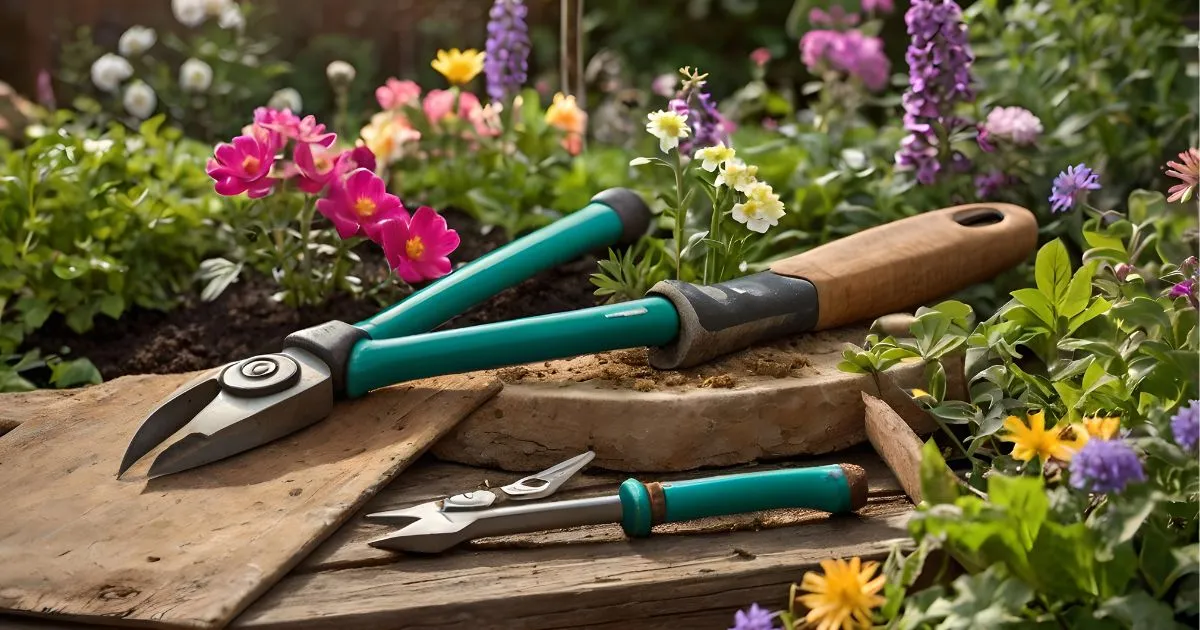Table of Contents
Gardening is a rewarding and therapeutic activity that allows individuals to connect with nature, grow their own food, and create beautiful outdoor spaces. However, to achieve success in gardening, having the right tools is essential. Whether you’re a beginner or an experienced gardener, understanding the names and uses of various gardening tools can significantly enhance your gardening experience. In this article, we will explore the most common gardening tools names, their functions, and how to use them effectively.
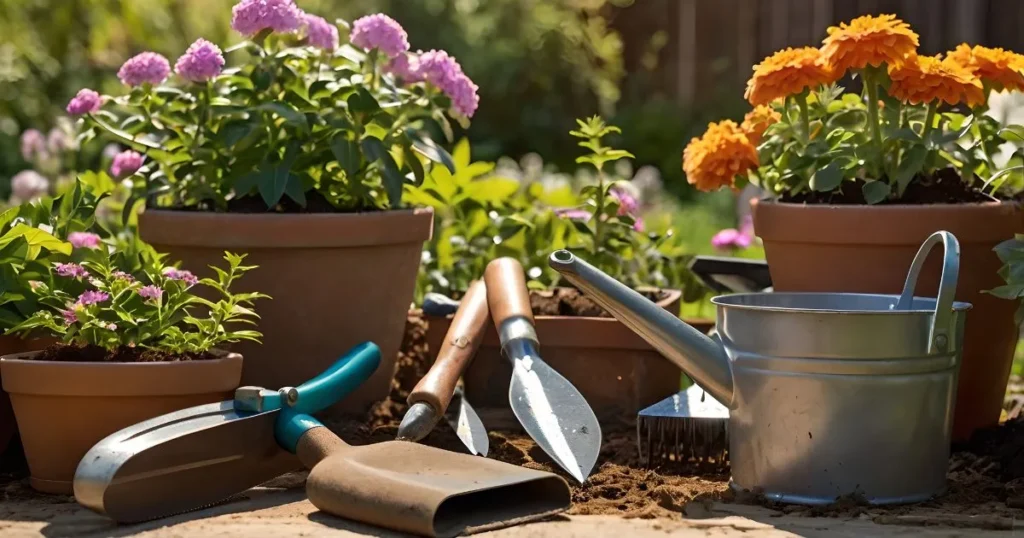
Basic Gardening Tools Names and Their Uses
Hand Tools for Everyday Gardening
Hand tools are the backbone of any gardener’s toolkit. They are designed for precision and ease of use, making them ideal for small-scale tasks. Below are some of the most essential hand tools and their uses:
Trowel
A trowel is a small, handheld tool with a pointed, scoop-shaped metal blade. It is primarily used for digging small holes, transplanting seedlings, and planting bulbs. Trowels are indispensable for container gardening and flower beds. They come in various sizes and materials, with stainless steel trowels being the most durable and rust-resistant.
Pruning Shears
Pruning shears, also known as secateurs, are used for trimming and shaping plants. They are perfect for cutting small branches, deadheading flowers, and maintaining the overall health of your plants. There are two main types of pruning shears: bypass and anvil. Bypass shears are ideal for live plants, while anvil shears are better suited for dead wood.
Hand Fork
A hand fork is a miniature version of a garden fork. It is used for loosening soil, removing weeds, and aerating small areas. Its compact size makes it ideal for working in tight spaces, such as between plants in a flower bed. Hand forks are also useful for mixing soil amendments and fertilizers.
Weeder
A weeder is a specialized tool designed to remove weeds from the root. It typically has a forked or hooked end that allows you to dig deep and extract weeds without disturbing nearby plants. Some weeders have a long handle for standing use, while others are handheld for precision weeding.
Long-Handled Tools for Heavy-Duty Tasks
For larger gardening tasks, long-handled tools provide the leverage and reach needed to get the job done efficiently.
Shovel
A shovel is a versatile tool with a broad, flat blade and a long handle. It is used for digging, lifting, and moving soil, compost, or mulch. Shovels come in various shapes and sizes, including round-point and square-point designs. Round-point shovels are ideal for digging, while square-point shovels are better for moving materials.
Spade
A spade is similar to a shovel but has a flat, rectangular blade. It is ideal for edging, cutting through roots, and digging precise holes. Spades are essential for creating clean borders and trenches. They are also useful for dividing perennials and transplanting shrubs.
Hoe
A hoe is a long-handled tool with a flat, paddle-shaped blade. It is primarily used for weeding, breaking up soil, and shaping planting beds. Hoes come in different styles, such as the Dutch hoe and the draw hoe. The Dutch hoe is pushed through the soil to cut weeds, while the draw hoe is pulled towards the user to cultivate the soil.
Rake
A rake is a tool with a row of teeth or tines attached to a long handle. It is used for gathering leaves, leveling soil, and removing debris from the garden. There are two main types of rakes: leaf rakes and garden rakes. Leaf rakes have flexible tines for collecting leaves, while garden rakes have sturdy tines for leveling soil and removing rocks.
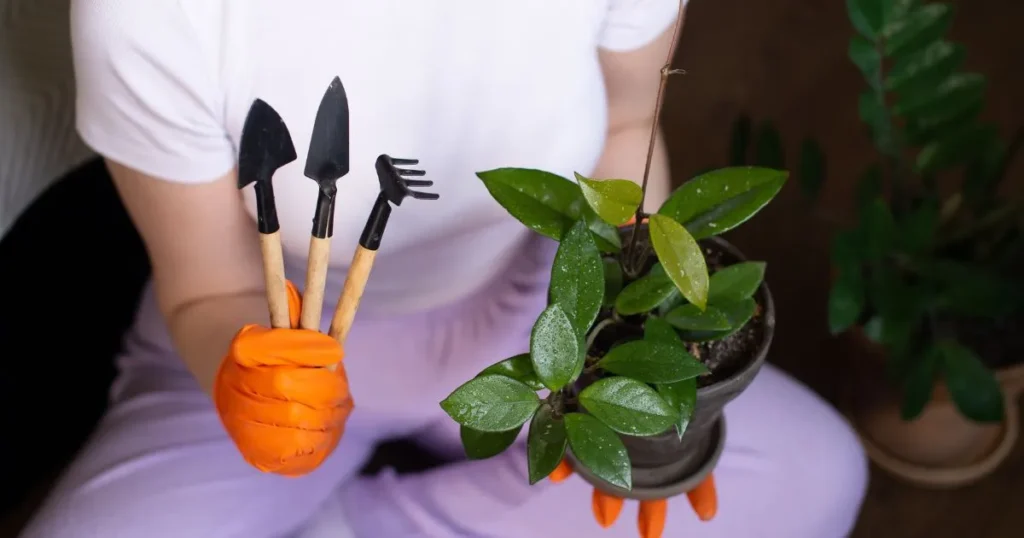
Specialized Gardening Tools Names for Specific Tasks
Tools for Planting and Seeding
Dibber
A dibber, also known as a dibble, is a pointed tool used to make holes in the soil for planting seeds or seedlings. It ensures consistent depth and spacing, which is crucial for healthy plant growth. Dibbers can be made of wood, metal, or plastic and come in various sizes to accommodate different types of seeds.
Seed Spreader
A seed spreader is a device used to distribute seeds evenly across a lawn or garden bed. It can be manual or mechanical and is particularly useful for sowing grass seeds or fertilizer. Manual seed spreaders are operated by hand, while mechanical spreaders are pushed like a lawn mower.
Tools for Watering and Irrigation
Watering Can
A watering can is a container with a spout used to water plants by hand. It is ideal for small gardens or potted plants where precision is required. Watering cans come in various sizes and materials, with metal cans being more durable and plastic cans being lighter.
Garden Hose
A garden hose is a flexible tube used to transport water from a tap to the garden. It is essential for watering large areas and can be equipped with nozzles for different spray patterns. Garden hoses come in various lengths and diameters, with reinforced hoses being more resistant to kinks and punctures.
Sprinkler
A sprinkler is an irrigation device that distributes water over a wide area. It is perfect for lawns and large garden beds, ensuring even coverage without manual effort. Sprinklers come in various types, including oscillating, rotary, and stationary models.
H3: Tools for Pruning and Trimming
Loppers
Loppers are long-handled pruning tools designed for cutting thicker branches that pruning shears cannot handle. They provide extra leverage and are ideal for maintaining trees and shrubs. Loppers come in bypass and anvil styles, with bypass loppers being better for live branches and anvil loppers for dead wood.
Hedge Shears
Hedge shears are used for trimming and shaping hedges and bushes. They have long, straight blades that make it easy to create clean, even cuts. Hedge shears can be manual or powered, with electric and battery-powered models being more efficient for large hedges.
Saw
A pruning saw is a specialized tool for cutting large branches and tree limbs. It has a curved or straight blade with sharp teeth designed for efficient cutting. Pruning saws come in various sizes, with folding models being more portable and fixed-blade models being more robust.
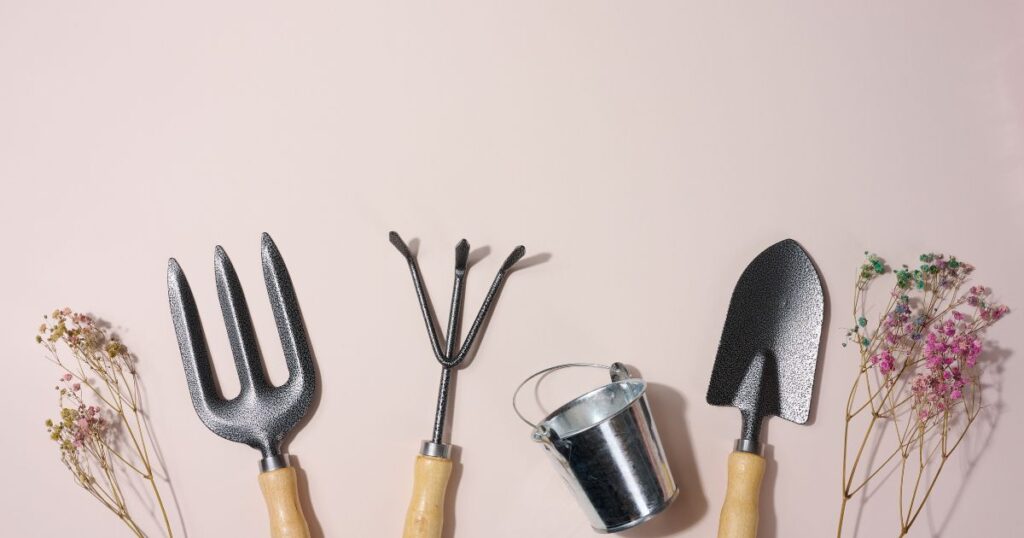
Maintenance and Storage of Gardening Tools
Cleaning Your Tools
Proper cleaning is essential to extend the life of your gardening tools. After each use, remove dirt and debris with a brush or cloth. For metal tools, apply a light coat of oil to prevent rust. Wooden handles should be wiped clean and occasionally treated with linseed oil to prevent cracking.
Sharpening Blades
Sharp tools make gardening tasks easier and more efficient. Use a sharpening stone or file to maintain the edges of pruning shears, hoes, and shovels. Regularly sharpened blades reduce the effort required for cutting and digging, making your gardening tasks more enjoyable.
Storing Your Tools
Store your gardening tools in a dry, sheltered area to protect them from the elements. Hang them on hooks or place them in a tool rack to keep them organized and easily accessible. Consider using a tool shed or garage for long-term storage, and ensure that tools are clean and dry before storing them.
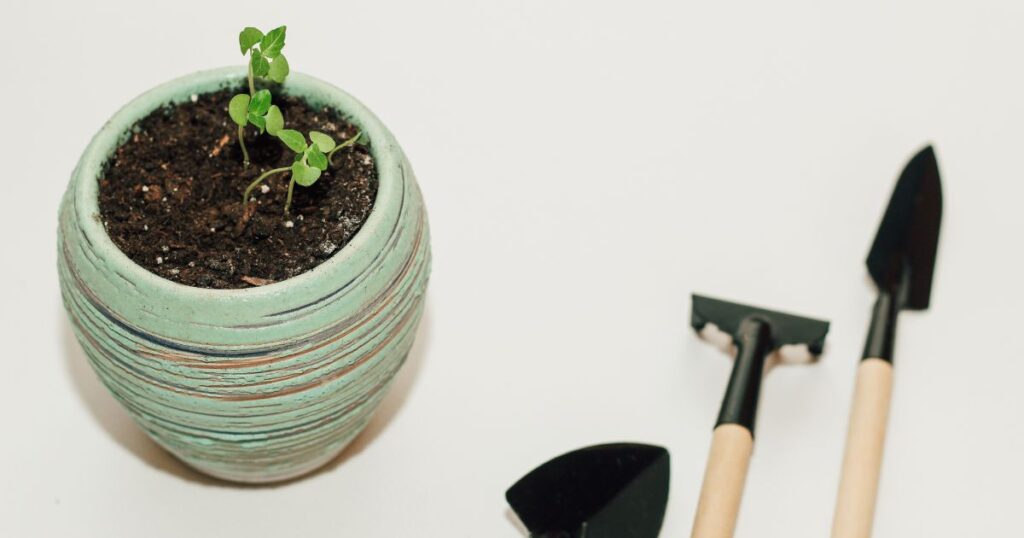
Advanced Gardening Tools Names for Specialized Tasks
Tools for Soil Preparation
Garden Fork
A garden fork is a tool with four sturdy tines and a long handle. It is used for turning soil, aerating compost, and breaking up clumps. Garden forks are essential for preparing garden beds and mixing soil amendments.
Cultivator
A cultivator is a tool with multiple curved tines used for loosening soil and removing weeds. It is ideal for preparing seedbeds and maintaining the soil structure. Cultivators can be handheld or long-handled, depending on the size of the garden.
Tools for Harvesting
Harvesting Knife
A harvesting knife is a sharp, curved blade used for cutting fruits, vegetables, and herbs. It is designed to make clean cuts without damaging the plant. Harvesting knives are essential for gardeners who grow their own produce.
Garden Scissors
Garden scissors are small, sharp scissors used for harvesting delicate plants and herbs. They are also useful for deadheading flowers and trimming small branches. Garden scissors are a versatile tool for any gardener.
Tools for Pest Control
Sprayer
A sprayer is a device used to apply pesticides, herbicides, and fertilizers to plants. It can be handheld or backpack-style, depending on the size of the garden. Sprayers are essential for maintaining plant health and controlling pests.
Pest Trap
Pest traps are devices used to capture and control garden pests. They can be sticky traps, pheromone traps, or mechanical traps. Pest traps are an eco-friendly way to manage pests without using chemicals.
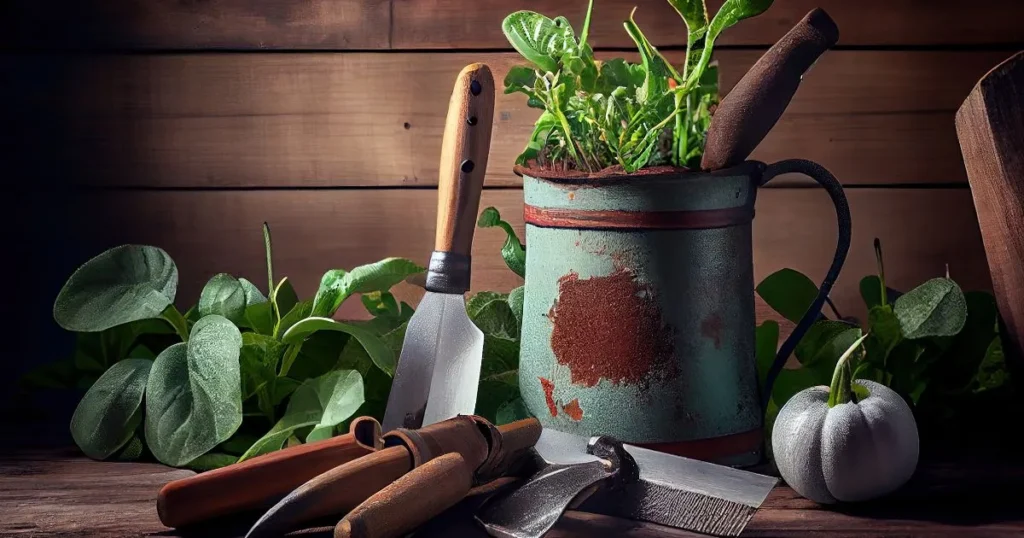
Conclusion
Gardening tools names and their uses are fundamental knowledge for anyone who enjoys working in the garden. From hand tools like trowels and pruning shears to long-handled tools like shovels and hoes, each tool has a specific purpose that contributes to the success of your gardening endeavors. By understanding the functions of these tools and maintaining them properly, you can create a thriving garden that brings joy and satisfaction.
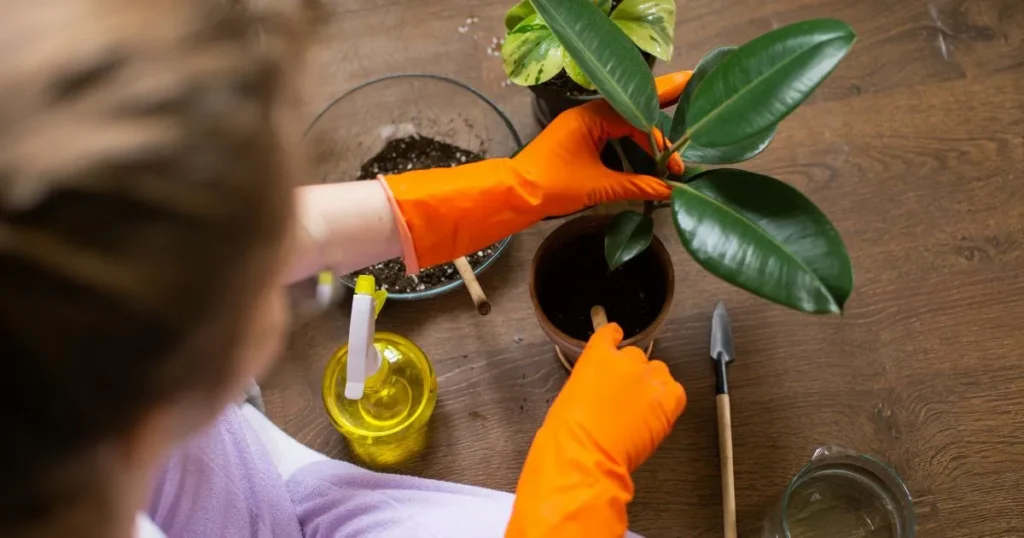
Frequently Asked Questions (FAQ)
What are the most essential gardening tools for beginners?
For beginners, the most essential gardening tools include a trowel, pruning shears, hand fork, weeder, shovel, and watering can. These tools cover the basic tasks of planting, weeding, and watering.
How do I choose the right gardening tools?
When choosing gardening tools, consider the size of your garden, the type of plants you grow, and your physical strength. Opt for ergonomic designs and high-quality materials to ensure durability and comfort.
How often should I clean and maintain my gardening tools?
Clean your gardening tools after each use to prevent dirt buildup and rust. Sharpen blades and oil metal parts regularly to keep them in good condition.
Can I use the same tools for indoor and outdoor gardening?
Yes, many tools like trowels, pruning shears, and watering cans can be used for both indoor and outdoor gardening. However, ensure that tools are cleaned before switching between environments to avoid spreading pests or diseases.
What is the best way to store gardening tools?
Store gardening tools in a dry, sheltered area such as a shed or garage. Use hooks, racks, or tool organizers to keep them off the ground and prevent damage.

